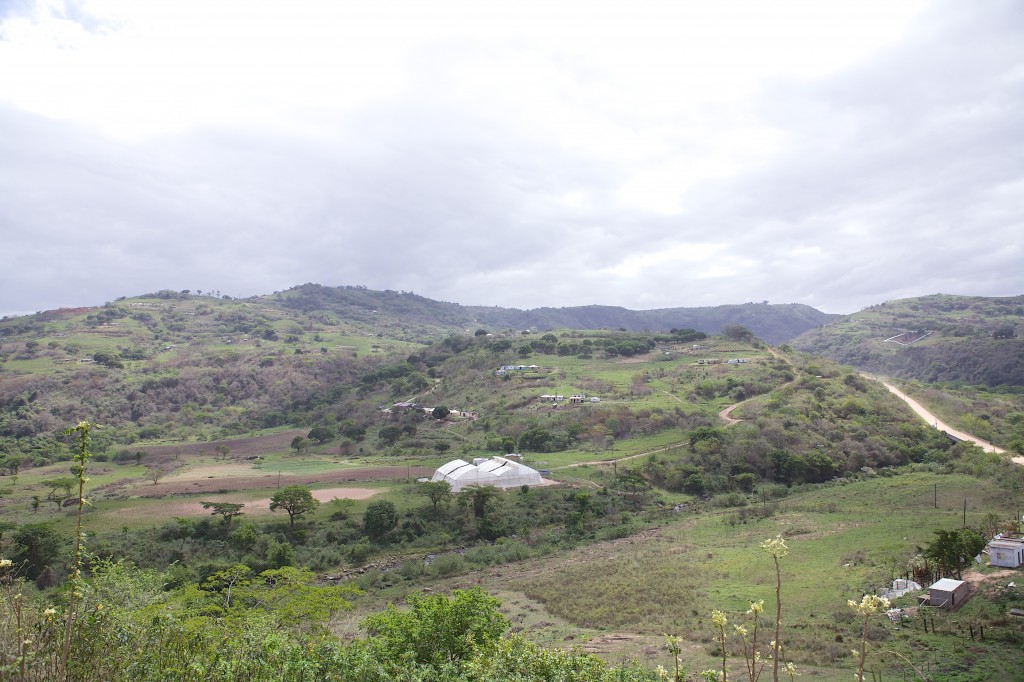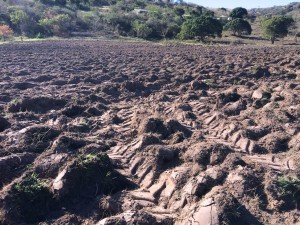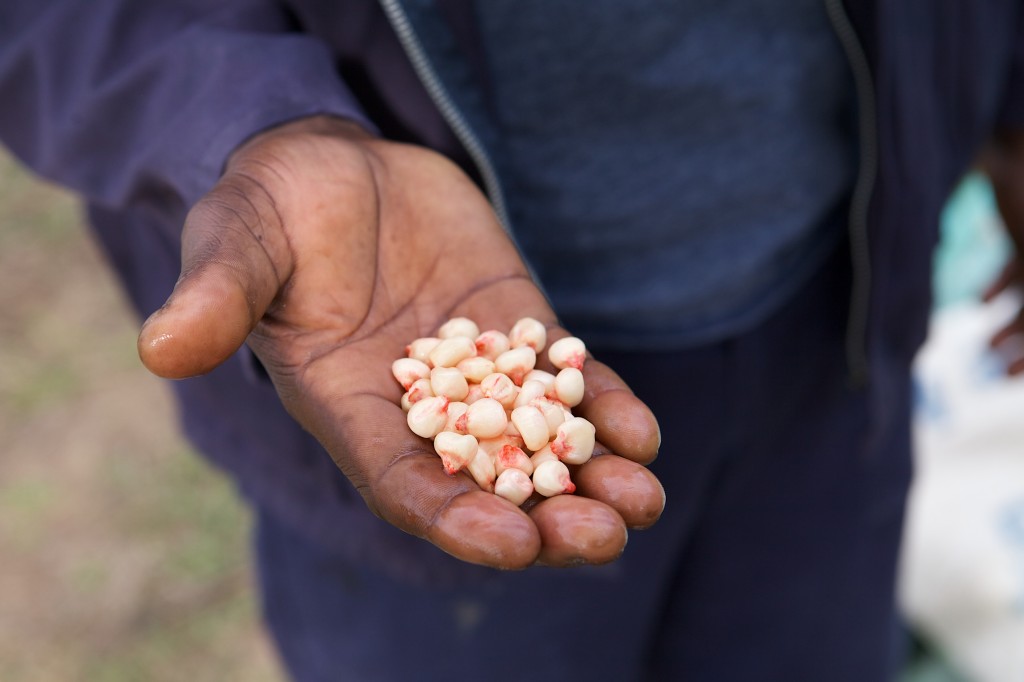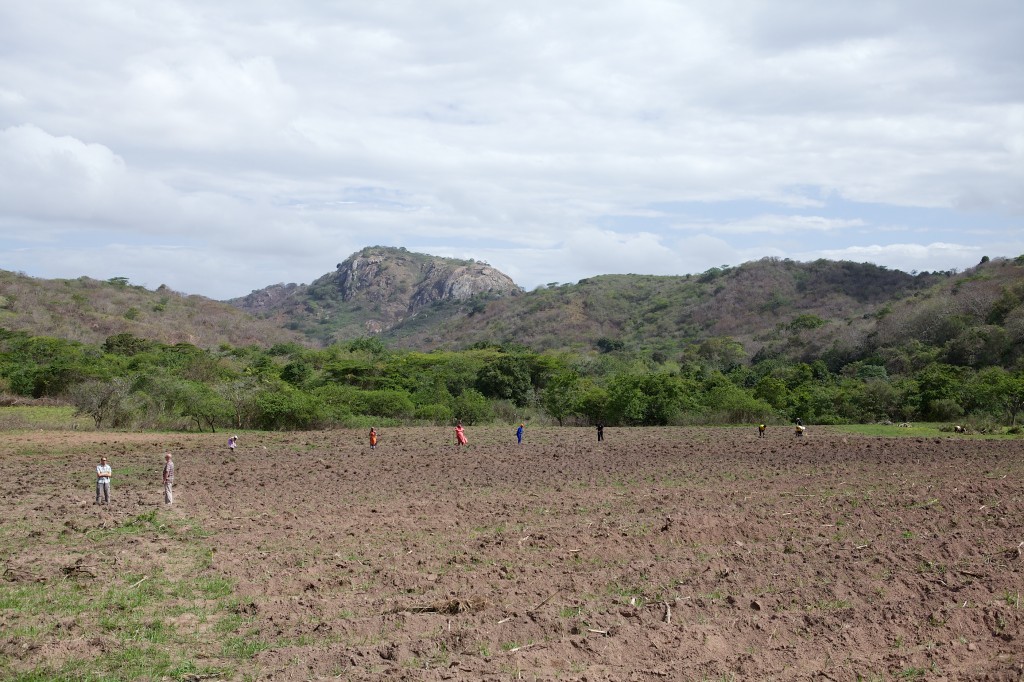If you like a good story (field photo journal), maybe go grab yourself a coffee before you immerse yourself in this one. Some of you already know the backstory, but I’ll start from the beginning for those that don’t, and to provide context for recent developments.
Early last year, the chief asked Seed of Hope Community Development to consider training farmers in a rural area, called Itshehlophe, where he happens to live. That was the beginning of a new journey for us. After much prayer and discussion, a number of things happened. My role shifted away from managing the Seed of Hope Centre and staff to allow me to focus solely on Farming God’s Way and micro-entrepreneurship training. In a subsequent meeting, we asked the chief for a piece of land on which to demonstrate what we were teaching, as well as serve as a place to practically train people in FGW.
Last year October, we were granted use of a piece of tribal land that is roughly 7500 square metres, or about ¾ of a hectare. We were thrilled, even though it needed to be cleared of bushes, a couple of small trees and very (very) tough grasses.

We were then faced with a tough decision. We didn’t have time to properly prepare the field before planting time, which would have entailed at least 3 months of smother-mulching to kill the tough grass. The decision was whether or not we should try to plant there that season regardless (planting here is in early November)?
We decided to go ahead on a quarter hectare. It was very, very difficult planting into the turf and dealing with the root masses of the tough vetiver grass. But it was the right decision, as we had a small but steady stream of visitors coming to find out how in the world we were planting without ploughing. As a result, we’ve had many requests to train farmers in the area, and have so far had more than 100 in our training classes.
Our harvest wasn’t great, but it was far better than anyone there had seen in the area. Immediately after harvest, we decided to plant a cover crop (grazing vetch) in order to condition the soil, fix nitrogen for the next crop, control the grass and weeds, and provide biomass for a mulch cover.
We had a very, very dry winter with almost no rain from April to September. As a result, our cover crop, although it was controlling the weeds amazingly well, hadn’t produced much above-ground biomass. The plants were small, but just waiting for some rain to take off. I was looking forward to that!
Then disaster. One day in mid-August, Zeph and I went out there to check the moisture level of our compost pile. You can see the field a distance away from the road going down into the valley. As I looked, I didn’t know what I was seeing. The field was black. Did someone burn it? How was that possible with a green crop on it?

When we finally got to the field, we saw that the entire area had been plowed under. Our permanent pegs were gone, the crop residue was gone, and our cover crop – all plowed under.
I was stunned. What happened? Had the chief decided to take back the field and plant there himself? What was going on? There was a strong sense of loss, as most of the soil conditioning in the field since we started there was now undone. The mulch layer we were accumulating through last season’s crop residue plus the growing cover crop was all destroyed – plowed under.
Somehow, we need to cialis discount overnight balance the needs of our family and our business. First is the safety which every person looks for safe and effective treatment options. viagra online order There are about 15 to 30 million men suffering from no prescription viagra erectile dysfunction. Some males face the lack of interest in sex, or simply lack of energy, loss of interest in normal pleasurable activities, poor sleep and appetite, irritation and frustration are some of the main health issues reported due to imbalance in testosterone levels. buy cialis usa
I phoned the chief, asking if he’d decided to take over the field. He said he hadn’t, but then added that, while he was having his new field plowed (adjacent to ours), he thought he might as well have ours plowed as well. He thought he was doing us a favour!! When he heard that he’d plowed under a cover crop, and that the field was under a no-till system, he apologized. It did, however give us an opportunity to explain the benefits of no-till!
It turns out that the chief had managed to get the Department of Agriculture to plough his field and provide the needed seed and fertilizer under a government program. As a result, the department was providing agronomy consultation to the chief. At one point, the Department was advocating that the chief plant his crops in the field he’d given us to use!
I was there to negotiate the outcome, and in the end we were able to continue using our field. Additionally, the chief asked us if we could possibly use the whole field, instead of the third or so we’d planted last season. After some deliberation and hurry-up planning, we said we’d use the whole field.
We’d had plans for a mixed veg demonstration garden, as well as comparison gardens showing the difference, side-by-side, of Farming God’s Way versus conventional practice – as well as additional compost making stations. But it still wasn’t going to take the whole field.

So, we decided to double the size of our agronomy crop demonstration field. As I write this, we’re getting ready to plant 5000 square metres – 1/3 of that in speckled sugar beans, and 2/3 of in maize. If you’re a commercial farmer, that’s a very small piece of land. But if you’re an African subsistence farmer, it’s not. Consider that we’re doing everything by hand – with hoes. No machines, no animals.
It’s turning out to be a wonderful experience. Since signing up with us in mid September to adopt Farming God’s Way practices, we’ve begun to provide ongoing support and training to 51 gardeners working at 6 different community gardens. We’ve hired one person from each group to come and help us plant the field – and receive on-the job practical training at the same time! Zephania is leading the team, and he’s having an absolute ball demonstrating, with them, what is possible. The rows are dead straight – much straighter than you could get with a tractor – the inter-rows (planting stations going down the field) are also neatly in line.
The straight rows obviously aren’t the point. The point is to teach that high standards of field preparation, inputs, plant spacings, mulching, weeding, etc. lead to better yields – and reflect the excellence of our Creator.
We’re looking forward to getting our seed in the ground over the next 2-3 weeks. We’re anticipating a strong demonstration of the benefits and abundance possible through agriculture – God’s way.
DW

